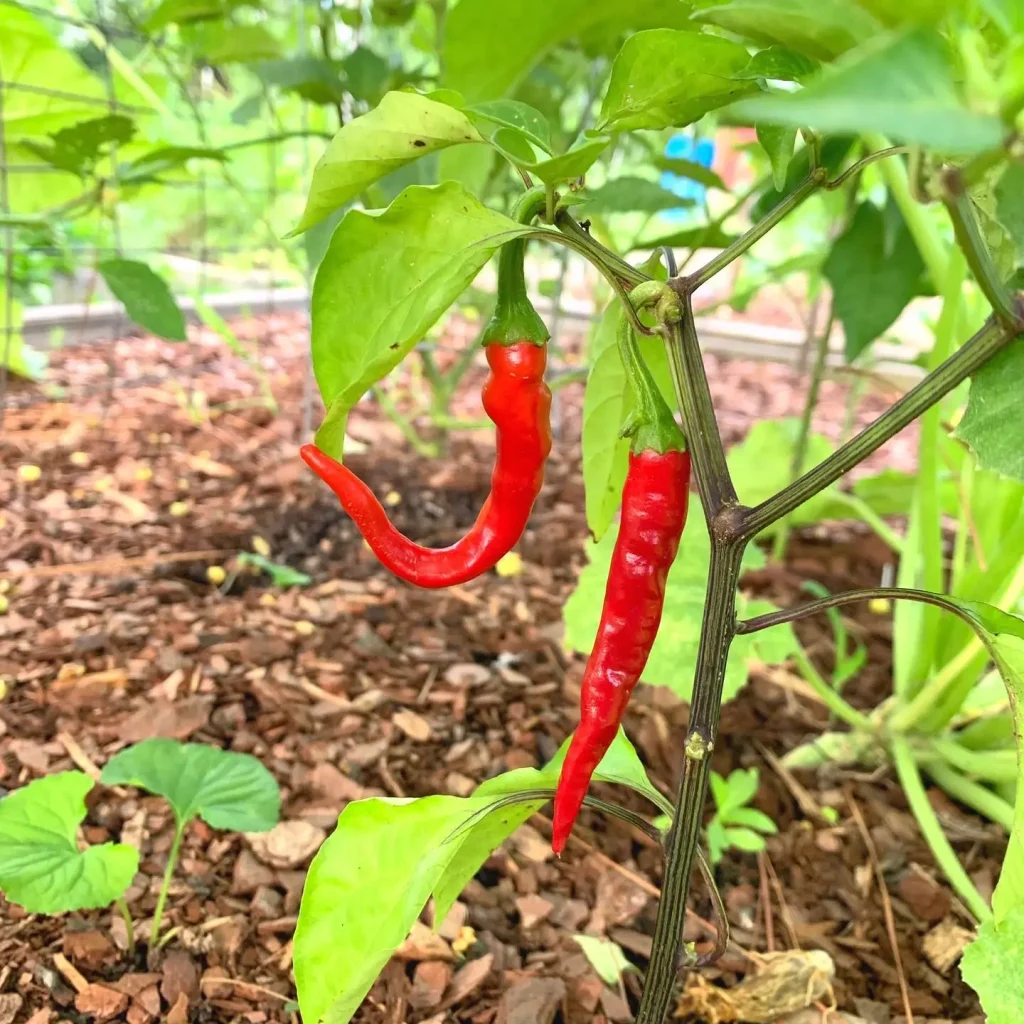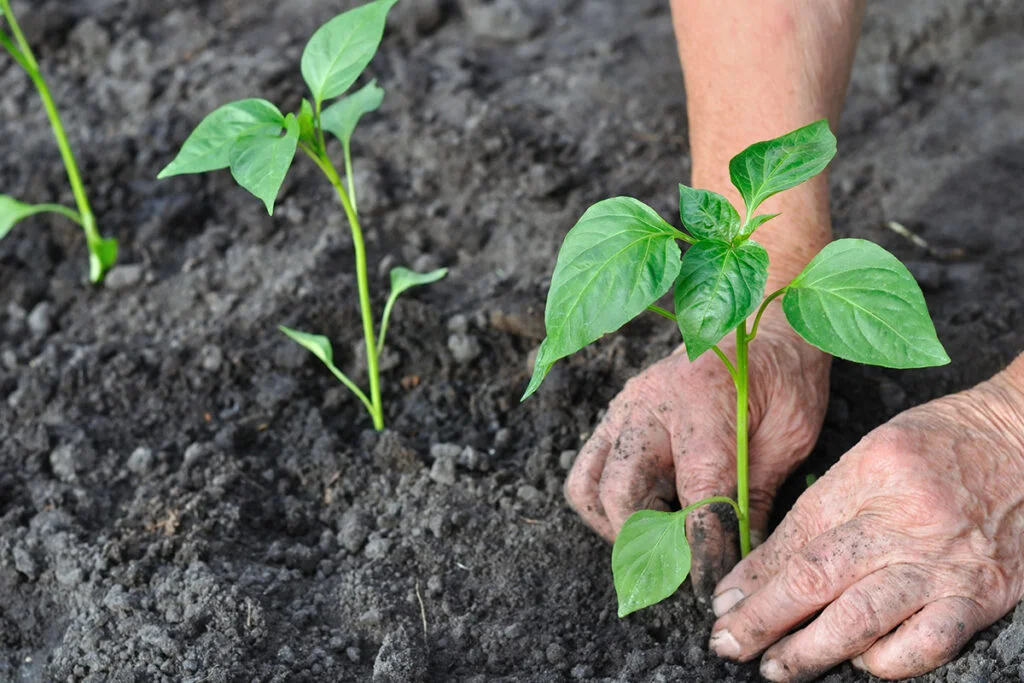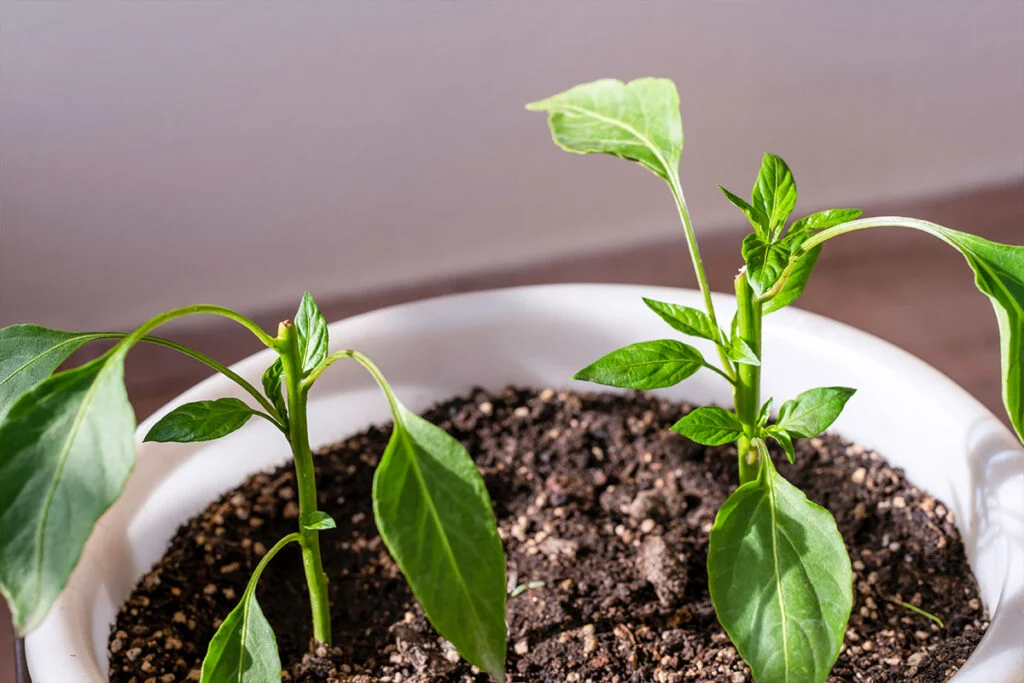Growing peppers in your garden can be a rewarding experience, whether you’re a seasoned gardener or just starting out. Peppers come in a wide variety of shapes, sizes, colors, and spiciness levels, offering endless possibilities for culinary creativity.
Choosing the Right Pepper Varieties

Before diving into pepper cultivation, it’s essential to choose the right varieties for your garden. Consider factors such as your climate, soil conditions, and personal preference for spiciness. Whether you prefer sweet bell peppers or fiery habaneros, there’s a pepper variety suited to your taste.
Determine Your Growing Space
Before you embark on selecting the perfect pepper variety, it’s paramount to evaluate the space available for cultivation.
Limited Space Consideration
If your gardening area is confined, opting for compact varieties like patio peppers or dwarf variants can be an astute choice. These compact cultivars are tailored to thrive in small gardens or containers, maximizing space efficiency without compromising on yield potential.
Consider Climate and Soil Type
The climatic conditions of your region play a pivotal role in the success of pepper cultivation. Pepper plants flourish in warm climates, where they can bask in ample sunlight. However, for regions with cooler temperatures, such as those prone to early frosts, greenhouse cultivation might be indispensable to provide the necessary warmth and protection.

Equally crucial is the soil composition. Peppers favor well-draining soil with a pH level ranging between 6.0 and 7.0. Soil that is excessively acidic or alkaline can hinder plant growth and nutrient absorption. Thus, it’s imperative to assess and amend the soil accordingly prior to planting to create an optimal growing environment for peppers.
Selecting the Right Pepper Variety
When it comes to choosing the ideal pepper variety, several factors warrant careful consideration:
Heat Level
Peppers exhibit a spectrum of heat intensities, ranging from mild to intensely hot. For novice gardeners or those with a preference for milder flavors, varieties such as bell peppers or banana peppers offer a gentle introduction to pepper cultivation. Conversely, enthusiasts seeking a fiery culinary experience may opt for hotter variants like jalapeños or habaneros.
Color
Peppers manifest in a kaleidoscope of vibrant hues, including green, red, yellow, orange, and even purple. The choice of color is not merely aesthetic but also influences the flavor profile and culinary applications. Green bell peppers, for instance, are commonly used for savory stuffing recipes, while ripe red peppers impart a sweeter flavor ideal for fresh salads or roasting.
Size
Peppers exhibit diverse sizes, ranging from diminutive cherry peppers to robust bell peppers. The selection of pepper size should align with your culinary endeavors and preferences. Petite peppers are ideal for snacking, while larger varieties are favored for stuffing or grilling, offering a delectable canvas for culinary creativity.
Growing Time
The duration from planting to harvest varies among pepper varieties. Some cultivars boast a shorter maturation period, making them well-suited for regions with shorter growing seasons or delayed planting. Conversely, other varieties necessitate a longer growing period to reach full maturity, requiring careful consideration of the local climate and frost dates to ensure a bountiful harvest.
By meticulously evaluating these factors, you can discern the perfect pepper variety tailored to your garden’s unique conditions, facilitating a fruitful and gratifying cultivation experience.
Planting Peppers
Timing plays a pivotal role in the successful establishment of pepper plants. To ensure optimal growth and minimize the risk of frost damage, it’s imperative to adhere to a strategic planting schedule.
Timing Considerations
Last Frost Date: Before initiating the planting process, ascertain the last frost date in your geographical area. Planting peppers before the last frost can expose tender seedlings to the risk of frost damage, stunting their growth or causing irreparable harm. Thus, exercise patience and wait until after the last frost date has passed before proceeding with planting.
Planting Method
Once the threat of frost has subsided, it’s time to initiate the planting process. Whether utilizing pepper transplants or seeds, meticulous attention to detail is essential to foster robust plant development.
Transplanting: If opting for pepper transplants, carefully select healthy seedlings from reputable nurseries or start your own from seeds indoors several weeks before the anticipated planting date. When transplanting, handle seedlings with care to prevent damage to delicate roots or foliage.
Direct Seeding: Alternatively, pepper seeds can be sown directly into the garden soil. Before planting, ensure the soil has warmed to an adequate temperature, typically around 65°F (18°C), to promote optimal germination and seedling emergence.
Spacing and Planting Depth
Proper spacing and planting depth are critical factors that directly impact the growth and development of pepper plants.
Spacing: Adequate spacing between pepper plants is essential to prevent overcrowding, which can inhibit airflow and increase the risk of disease. Follow the spacing recommendations specific to each pepper variety, typically ranging from 18 to 24 inches (45 to 60 centimeters) apart, to allow ample room for growth and fruit production.
Planting Depth: When planting pepper transplants or seeds, ensure they are positioned at the appropriate depth in the soil. Transplants should be planted at a depth equal to their root ball, while seeds should be sown at a depth of approximately ¼ to ½ inch (0.6 to 1.3 centimeters) below the soil surface. Proper planting depth facilitates root establishment and provides stability for young seedlings as they begin to grow.
Soil Preparation
Before planting peppers, it’s essential to prepare the soil to create an optimal growing environment conducive to healthy plant development.
Soil Amendment: Prior to planting, amend the soil as needed to optimize fertility, drainage, and pH levels. Incorporate organic matter such as compost, aged manure, or composted leaves to improve soil structure and nutrient content. Additionally, conduct a soil test to assess pH levels and make any necessary adjustments to ensure they fall within the optimal range for pepper cultivation (pH 6.0 to 7.0).
By adhering to these detailed guidelines and best practices, you can enhance the success of your pepper planting endeavors and cultivate thriving pepper plants capable of producing abundant yields.
Caring for Pepper Plants
Pepper plants thrive when provided with consistent moisture and proper nutrition. To ensure vigorous growth and abundant yields, follow these essential care tips:
Watering and Fertilization
Maintain adequate soil moisture by watering pepper plants deeply and regularly, especially during periods of drought or high temperatures. Apply a balanced fertilizer to replenish essential nutrients and support healthy development.
Pest and Disease Management
Regularly monitor pepper plants for signs of pests or diseases, such as aphids, mites, or fungal infections. Take prompt action to mitigate these threats and protect your crop from potential damage. Utilize organic pest control methods whenever possible to minimize environmental impact.
Pruning and Support

Pruning pepper plants is crucial for promoting robust growth and maximizing yields. Remove any suckers that sprout in the leaf axils to redirect energy towards fruit production. Provide support for tall varieties using stakes or cages to prevent bending or breakage under the weight of the fruit.
Harvesting Peppers
Harvest peppers at the peak of ripeness to ensure optimal flavor and texture. Monitor the size, color, and texture of the peppers, as they indicate readiness for picking. Use scissors or shears to gently snip peppers from the plant, taking care not to damage the stems or adjacent fruit.
Storing and Preserving Peppers
To prolong the shelf life of harvested peppers, store them in a cool, dry place away from direct sunlight. Alternatively, freeze or preserve excess peppers for future use in various culinary applications, such as soups, stews, sauces, and salsas. Experiment with different cooking techniques to unleash the full flavor and versatility of homegrown peppers.
Troubleshooting Common Issues
Yellowing leaves and blossom end rot are common problems that pepper growers may encounter. Address these issues promptly by adjusting watering practices, improving soil drainage, and applying appropriate remedies such as calcium supplements or fungicides.
Tips for Success
Achieving success in pepper cultivation necessitates diligent monitoring and a willingness to experiment. Follow these invaluable tips to optimize your pepper harvest:
Regular Monitoring: Keep a vigilant eye on your pepper plants, observing them for any signs of stress, nutrient deficiencies, or pest infestations. Prompt intervention can prevent issues from escalating and ensure healthy plant growth.
Experimentation: Don’t hesitate to explore new pepper varieties or cultivation techniques. Experimenting with different pepper cultivars allows you to discover which ones thrive best in your garden’s unique conditions, while trying innovative growing methods can enhance overall productivity.
Benefits of Homegrown Peppers
Growing peppers at home offers a multitude of benefits, both for your health and the environment:
Freshness and Quality: Harvesting your own peppers ensures unparalleled freshness and quality. Homegrown peppers are free from the pesticides and preservatives commonly found in store-bought produce, allowing you to savor their natural flavors and nutritional benefits.
Healthier Lifestyle: By cultivating your own peppers, you have full control over the growing process, enabling you to avoid the use of synthetic chemicals and adopt organic gardening practices. Consuming pesticide-free peppers contributes to a healthier diet and reduces exposure to potentially harmful substances.
Environmental Sustainability: Homegrown peppers have a significantly lower carbon footprint compared to commercially grown produce, as they eliminate the need for long-distance transportation and excessive packaging. By reducing reliance on imported peppers, you contribute to a more sustainable food system and minimize environmental impact.
Growing Peppers in Containers
Lack of space for a conventional garden should not deter you from growing peppers. Fortunately, peppers can thrive in containers, making them a versatile option for patios, balconies, or windowsills. To ensure success:
Container Selection: Opt for large containers with ample drainage holes to prevent waterlogging. Choose containers made of durable materials like plastic, ceramic, or wood.
Sunlight Exposure: Position your container-grown peppers in a location that receives at least 6-8 hours of direct sunlight daily. Placing them near south-facing windows or on sunny balconies ensures they receive adequate sunlight for healthy growth.
Watering: Container-grown peppers have a tendency to dry out more quickly than those planted in the ground. Therefore, it’s essential to water them regularly, ensuring the soil remains consistently moist but not waterlogged.
Overwintering Peppers
Extend the pepper growing season by overwintering your plants indoors:
Preparation: Before the onset of frost, carefully dig up pepper plants from the garden, ensuring you preserve the root system as much as possible.
Transplanting: Transfer the pepper plants into large pots filled with well-draining potting mix. Choose pots that accommodate the root system comfortably and provide ample space for growth.
Indoor Location: Place the potted pepper plants in a sunny location indoors, such as a south-facing window or under grow lights. Adequate sunlight is crucial for maintaining plant health and stimulating continued growth during the winter months.
Care: Continue to care for overwintered pepper plants by watering them regularly, monitoring for pests or diseases, and providing occasional fertilization as needed. With proper care, pepper plants can thrive indoors throughout the winter, ready to be reintroduced to the garden once the weather warms up again.
Conclusion
Growing peppers in your garden is a gratifying experience that offers a bounty of fresh, flavorful peppers for culinary enjoyment. By following these tips and techniques, you can cultivate healthy pepper plants and harvest a plentiful crop to enjoy throughout the growing season.